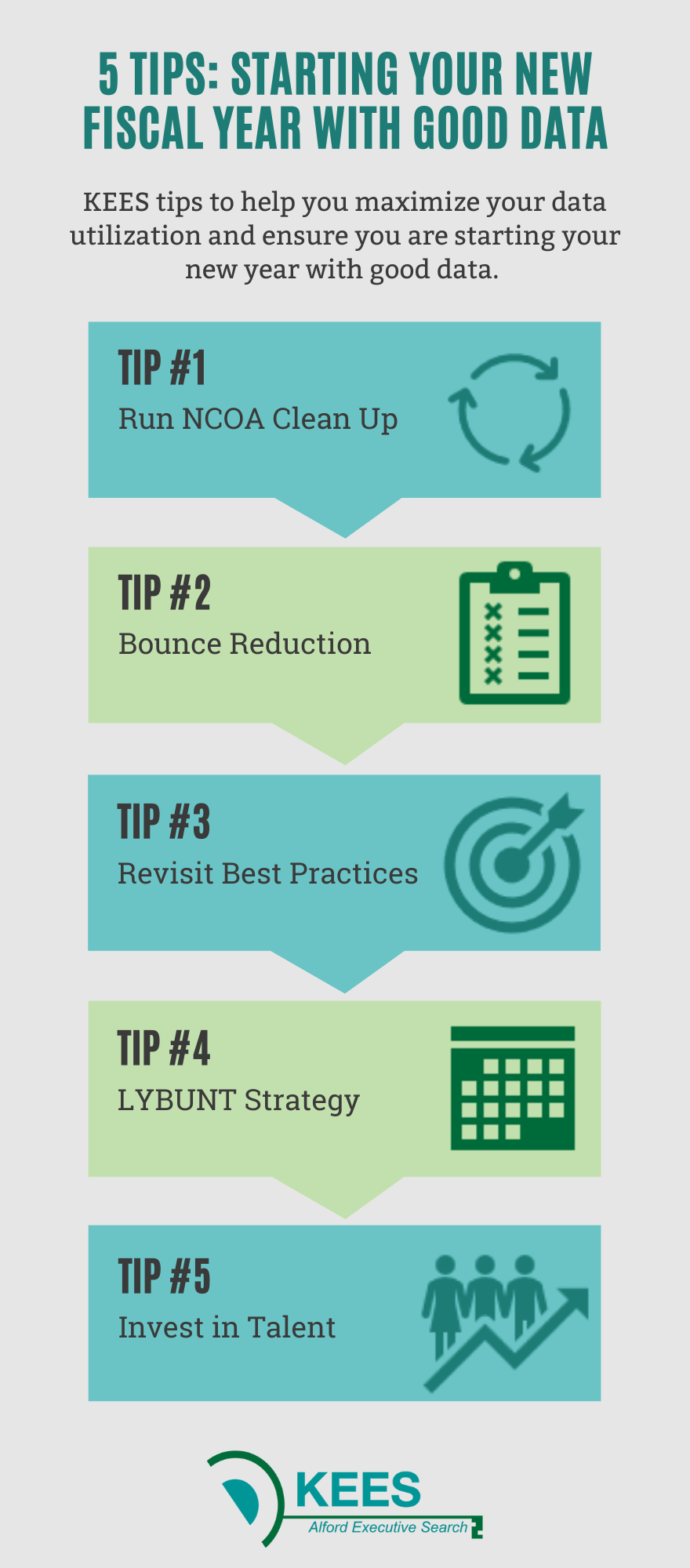As we head into the month of July, many nonprofit and public sector organizations are beginning a new fiscal year. Just as with all year end measures, it means that now is an excellent time to review any CRM data, changes in philanthropy measures, fundraising campaigns, and think about how these processes can be improved for this next fiscal year.
To ensure the new fiscal year is off to a productive start, Stacy Harker, KEES Consultant, has created a few tips and tricks to help you maximize your data utilization and ensure you are starting your new year with good data.
- Run NCOA (National Change of Address) Clean Up – For the past five years, over 40 million Americans moved each year, according to American Community Survey (ACS) data. That calculates to about 13 percent of Americans moving, annually. Running the NCOA, minimally once a year will save you money in mailings and keep your data fresh. Many CRMs have this feature built into the subscription and also have a tool to suppress names of deceased.
- Bounce Reduction – Email campaigns are the least expensive way to reach out to your donors so make sure your lists are CLEAN! An email bounce is an error message received when email you’ve sent isn’t delivered. Your email server or the destination mail server sends a Non-Delivery Report (NDR). There are a variety of reasons for email bounces, including full inboxes, servers that are not responding, email addresses that no longer exist, and invalid or fake email addresses. Cleaning up bounces after every email campaign ensures your constituencies are reachable.
- Revisit Best Practices – No matter the size of your organization, there should be ‘best practices’ in place for how data is entered, used, and maintained. The new fiscal year is a great time to look at your organization’s data hygiene and updating or creating best practices for all users, especially new teammates.
- LYBUNT Strategy – Look at LYBUNTs (gave Last Year But Unfortunately Not This year) immediately at the start of your fiscal year and strategize how to reach out and steward their continued support. Donors like to know they are “missed” if you have not received their annual support.
- Invest in Talent – Data is one of the largest assets of any nonprofit organization. Investing in your database administrators is a key strategy that will yield dividends and improve the quality of your database, and your results. Classes, conferences, and staying abreast of trends are a few ways to invest in and retain talented professionals and will increase a nonprofit’s ability to achieve its mission and interact with their constituencies in a meaningful way.
For more tips and information on utilizing your data to its fullest potential, please reach out to Stacy Harker, KEES Consultant at sharker@kees2success.com.

 Blog
Blog